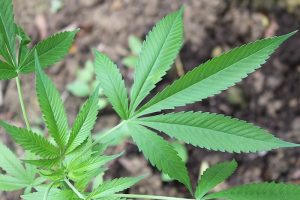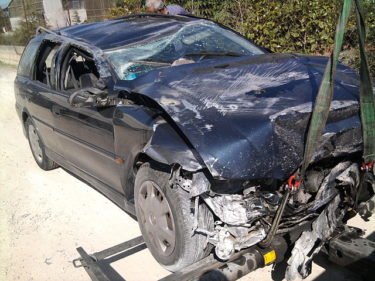A new report released by the Rocky Mountain High Intensity Drug Trafficking Area (HIDTA) presents damning evidence relating to the effects of marijuana legalization in Colorado and beyond.
The 2019 report by HIDTA — a multi-agency operation that coordinates federal, state and local drug enforcement efforts to combat drug trafficking in Colorado, Utah and Wyoming — could easily be required reading for Vermont legislators and pot activists interested in expanding recreational cannabis use in the Green Mountain State.

A 2019 Colorado report could easily be required reading for Vermont legislators interested in expanding recreational cannabis use in the Green Mountain State.
Recreational marijuana has been legal in the Colorado since 2013.
In Vermont, most of the former penalties for possessing small amounts of recreational marijuana were removed by Gov. Phil Scott’s signature of H.511 in January 2018.
For people age 21 and up, H.511 made legal the possession of 1 ounce or less of marijuana, plus cultivation of two mature and four immature cannabis plants. The law retained criminal penalties for possession, dispensing and sale of larger amounts.
Medical marijuana use has been legal in Vermont since 2004.
Unlike in Colorado, however, the effort to remove marijuana-related penalties in Vermont did not include ways to tax and regulate commercial pot sales. Hence, the ideas are now being studied by the governor’s Marijuana Advisory Commission, a panel made up of state lawmakers, select agency and department heads, and the director of the States’ Attorneys and Sheriffs.
The commission’s final report on marijuana legalization was submitted to the governor last December.

Rocky Mountain High: Traffic deaths where drivers tested positive for marijuana increased 109% in Colorado. Traffic deaths involving drivers who tested positive for marijuana more than doubled between 2013 and 2018.
When Scott formed the pot study panel in 2017, he asked commissioners to propose legislation that would create a regulated retail market for marijuana sometime in 2019. Some Vermont legislators support a tax-and-regulate plan, but others have been staunchly opposed.
The HIDTA report, titled “The Legalization of Marijuana in Colorado: The Impact,” details the negative impact of legal recreational cannabis in the Centennial State. The study looks at pot-created problems ranging from auto accidents and fatality statistics to an out-of-state focused black market for pot-related products.
The impact on the highways
The Impact report states that since recreational marijuana was legalized in Colorado, traffic deaths in which drivers tested positive for marijuana increased.
The HIDTA report found:
- Traffic deaths where drivers tested positive for marijuana increased 109%
- Traffic deaths involving drivers who tested positive for marijuana more than doubled between 2013 and 2018
- The percentage of all Colorado traffic deaths that were marijuana related increased from 15% in 2013 to 23% in 2018
- Marijuana use in the past month for children ages 12 and up increased 58%, and is 78% higher than the national average
- Adult marijuana use increased 94%, and is 96% higher than the national average
- The yearly number of emergency room visits related to marijuana increased 54% after legalization
- Marijuana-related hospitalizations increased 101% after legalization
- Suicides where toxicology results were positive for marijuana increased from 14% in 2013 to 23% in 2017.
The report also shows that tax revenue from state-authorized marijuana sales, far from being the “game-changer” cannabis activists promised it would be, amounted to around nine-tenths of 1% (000.9%) of Colorado’s fiscal year 2018 budget.
But the report’s most damning findings are connected to the increase in traffic fatalities following marijuana legalization on Colorado’s highways and rural backroads.
“Since recreational marijuana was legalized, traffic deaths involving drivers who tested positive for marijuana more than doubled from 55 in 2013 to 115 people killed in 2018,” according to the report. “This equates to one person killed every 3 days in 2018 compared to one person killed every 6½ days in 2013. Since recreational marijuana was legalized, the percentage of all Colorado traffic deaths that were marijuana related increased from 15 percent in 2013 to 23 percent in 2018.”
Other red flags
While Vermont has yet to legalize recreational pot on the scale seen in Colorado, anti-cannabis advocates warn of other, less publicized concerns.
Judith Margulies, a Vermont-registered pharmacist, recently sounded an alarm over potentially harmful marijuana-related compound entering the Vermont food chain through the growing popularity of CBD (cannabidiol), a fat-soluble cannabinoid.
According to Margulies, under the new Vermont Hemp Program, feed pellets containing CBD will be used for feeding livestock, notably dairy cows. The hemp program, signed into law as S.58 this year, authorizes the growing, cultivation and marketing of industrial hemp.
The trendy hemp and cannabis fad has also spurred a number of pharmaceutical companies to test cannabis-based drugs, like CBD, for a variety of ailments from back pain to autism and even schizophrenia.
CBD can also be inhaled via legal, packaged hemp “reefers” sold online and in some trendy smoke shops. The cannabis cigarettes, or “hempettes,” are now legal in all 50 states. While not causing intoxication per se, inhaled CBD has a mild, tranquilizing “buzz” effect.
Margulies also sees danger in a new line of high-priced, over-the-counter CBD “cure all” products available at some drug stores in Vermont. While not specifically a “food chain” concern like hemp feed pellets on Vermont farms, the products have untested long-term effects on the human body.
“The current legality over CBD is hazy,” wrote Jon Johnson of Medical News Today. “Hemp and hemp-derived products are legal under the Farm Bill, as long as their THC content is less than 0.3%. However, there is still some confusion over the specifics. People should check the laws in their state and any travel destination. They should keep in mind the FDA have not yet approved any nonprescription products.”
Lou Varricchio is a freelance reporter for True North Reports. Send him news tips at lvinvt@gmx.com.


